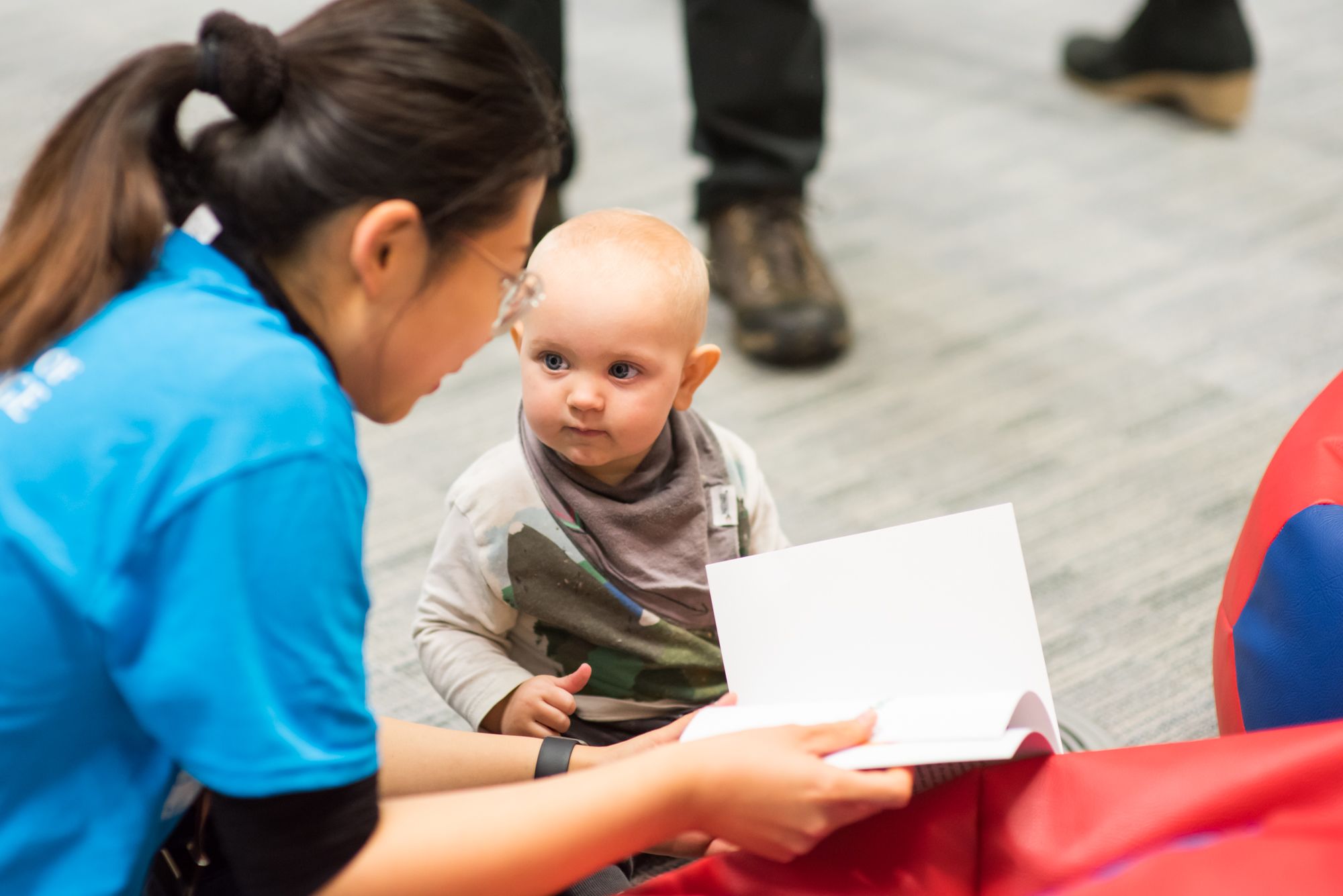Learning pathways show how children who miss out on best start could be guided towards better reading and writing by age 11

The early talk and communication that children experience when very young, though essential in preparing them for school, has no direct impact on their reading and writing skills by age 11, new research shows.
The results of the study, by a team of academics from several UK universities, indicate that while babies and toddlers brought up in an enriched communication environment have stronger foundational literacy skills, children who miss out are not necessarily left at a permanent disadvantage. Indeed, the research suggests that identifying specific ‘learning pathways’ during primary school could eventually help teachers to devise effective, personalised strategies to support these children to catch up with their more fortunate peers.
Surprisingly, we found that there is no direct relationship between the communication environment at age two, and literacy at age 11. Instead, it helps children to build other skills which in turn affect literacy outcomes
The importance of children’s ‘Early Language and Communication Environment’ (ELCE) is widely acknowledged in research and policy. It refers to how much parents and caregivers talk, read, sing and play with very young children, to the quality of that engagement, and to children’s access to resources like books and toys.
While a richer ELCE is associated with both better school readiness and later educational outcomes, less is known about how it shapes children’s development of other linguistic and social skills that support academic achievement. The new research used data from more than 7,000 children to map out the interdependencies between the ELCE and a network of skills and competencies that children acquire during primary school, which in turn influence their reading and writing by age 11.
Dr Jenny Gibson, from the Faculty of Education, University of Cambridge, said: “Fundamentally, we want to understand more about why children’s literacy skills vary by the time they leave primary school. Surprisingly, we found that there is no direct relationship between the communication environment at age two, and literacy at age 11. Instead, it helps children to build other skills which in turn affect literacy outcomes.”
“There is sometimes a sense that if children miss out on a high-quality communication environment when very young, they are at a long-term disadvantage. This research shows that there are multiple opportunities to guide them back towards successful literacy outcomes as they progress through primary school.”

Diagram of the main learning pathways described in the study. Image by Clare Mackenzie, Faculty of Education.
Diagram of the main learning pathways described in the study. Image by Clare Mackenzie, Faculty of Education.
The researchers used data from the Avon Longitudinal Study of Parents and Children, an ongoing University of Bristol-based project that is capturing information about a cohort of children born in the 1990s.
This covered the children’s ELCE up to age 2, literacy and social skills at the start of school (age five), language and social development in middle-primary school (ages seven to nine) and literacy skills at the end of Key Stage 2 (age 11). Importantly, it also included measures of the children’s socioeconomic status at the time of their birth (SES), which significantly influences children’s academic progress as well.
Because the information was gathered from different assessments and questionnaires, the team then used structural equation modelling to standardise the data and make it comparable. This enabled them to chart whether, and how significantly, one factor or feature in a child’s developing skill-set affects another.
They found that both the quality of a child’s communication environment before age two and early family affluence directly impact upon their literacy levels and social skills when they start school at five. The ELCE and SES are also directly associated with children’s oral language and social development at ages seven to nine, and with other important skills such as ‘decoding’ (understanding letter-sound relationships and reading familiar and unfamiliar words aloud).
Children from lower socioeconomic backgrounds tend to have poorer school readiness, poorer oral language and social development and poorer literacy at 11. The early language and communication environment doesn’t work like that.
While early socioeconomic status is directly associated with literacy levels at age 11, however, the study found no corresponding link with the ELCE. Dr Umar Toseeb, from the Department of Education at the University of York and a co-author of the study, said: “Children from lower socioeconomic backgrounds tend to have poorer school readiness, poorer oral language and social development and poorer literacy at 11. The early language and communication environment doesn’t work like that. It has a direct influence on school readiness at age five, but by age 11 its influence is mediated by interim developments.”
That influence can be described in terms of ‘learning pathways’: from a richer early language and communication environment, to better school readiness and/or mid-primary level skills, and then (in part via yet further stages) to better reading and writing skills at age 11. The study charts several of these indirect routes.
It also shows that these pathways are not uniformly influential. For example, children’s reading and writing skills when they start school are more strongly associated with their subsequent literacy skills than the social aspects of ‘school readiness’. But social adjustment at age five does lay a platform for social skills developed in mid-primary school, which in turn have a greater direct impact on literacy outcomes later.
While this issue requires further study, it implies that it may be possible to target specific skills at different times during a child’s primary school career to help significantly improve their reading and writing, even if they lacked exposure to a high-quality communication environment in the early years. This is particularly important because the study also reinforces earlier research findings showing that a high-quality ELCE (and therefore the knock-on effects charted here) can improve academic outcomes even for the poorest children.
For instance, the researchers suggest that there may be an argument for focusing on the social skills development of children who struggle with reading and writing at around ages seven to nine, because those skills are particularly important to literacy outcomes at that age. At a classroom level, this might mean teachers encouraging play and games that involve turn-taking and talk, or using problem-based group activities in which children have to work together.
“Many teachers all over the country will already be using tactics like these to help children,” Gibson added. “Illuminating the different, nuanced pathways that shape literacy outcomes means that we might eventually be able to profile a child, or group of children, and apply such approaches in a really effective and targeted way.”
The study is published in the Oxford Review of Education.

